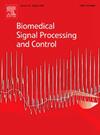Cross-subject seizure detection with vision transformer and unsupervised domain adaptation
IF 4.9
2区 医学
Q1 ENGINEERING, BIOMEDICAL
引用次数: 0
Abstract
Automatic seizure detection is of critical importance for clinical epilepsy treatment. Due to the variability of Electroencephalography (EEG) patterns across different individuals, most existing seizure detection methods fails to generalize across patients. To tackle this issue, this paper proposes a cross-subject seizure detection combines Vision Transformer (ViT) and unsupervised domain adaptation (UDA). Specifically, to enhance the generalization ability of the ViT backbone across different subjects, an adversarial network is introduced on the class token to disentangle global transferable features. Meanwhile, the multi-head attention mechanism is replaced by the transfer adaptation module (TAM) to disentangle transferable features at the patch level. Additionally, to retain the discriminative features related to epileptic seizures, a discriminative clustering module (DCM) is introduced to constrain the model. Our experiments on the CHB-MIT dataset demonstrate that the proposed method achieves strong performance in both evaluation paradigms: in epoch-based analysis it attains 89.20% accuracy, 91.05% sensitivity, and 94.54% specificity, while in event-based evaluation it maintains 89.23% sensitivity with a low false detection rate of 0.42/h. The results verify the feasibility of this method in cross-subject seizure detection.
基于视觉变换和无监督域自适应的跨主体癫痫检测
癫痫发作自动检测对临床癫痫治疗至关重要。由于脑电图(EEG)模式在不同个体之间的可变性,大多数现有的癫痫检测方法无法在患者之间推广。为了解决这一问题,本文提出了一种结合视觉变换(Vision Transformer, ViT)和无监督域自适应(unsupervised domain adaptation, UDA)的跨主题癫痫检测方法。具体而言,为了提高ViT主干网跨不同主题的泛化能力,在类令牌上引入对抗网络来解绕全局可转移特征。同时,用转移适应模块(TAM)代替多头注意机制,在贴片级解缠可转移特征。此外,为了保留与癫痫发作相关的判别特征,引入了判别聚类模块(DCM)来约束模型。我们在CHB-MIT数据集上的实验表明,该方法在两种评估范式中都取得了较好的性能:在基于时代的分析中,它达到了89.20%的准确率、91.05%的灵敏度和94.54%的特异性,而在基于事件的评估中,它保持了89.23%的灵敏度和较低的误检率(0.42/h)。实验结果验证了该方法在跨主体癫痫检测中的可行性。
本文章由计算机程序翻译,如有差异,请以英文原文为准。
求助全文
约1分钟内获得全文
求助全文
来源期刊

Biomedical Signal Processing and Control
工程技术-工程:生物医学
CiteScore
9.80
自引率
13.70%
发文量
822
审稿时长
4 months
期刊介绍:
Biomedical Signal Processing and Control aims to provide a cross-disciplinary international forum for the interchange of information on research in the measurement and analysis of signals and images in clinical medicine and the biological sciences. Emphasis is placed on contributions dealing with the practical, applications-led research on the use of methods and devices in clinical diagnosis, patient monitoring and management.
Biomedical Signal Processing and Control reflects the main areas in which these methods are being used and developed at the interface of both engineering and clinical science. The scope of the journal is defined to include relevant review papers, technical notes, short communications and letters. Tutorial papers and special issues will also be published.
 求助内容:
求助内容: 应助结果提醒方式:
应助结果提醒方式:


